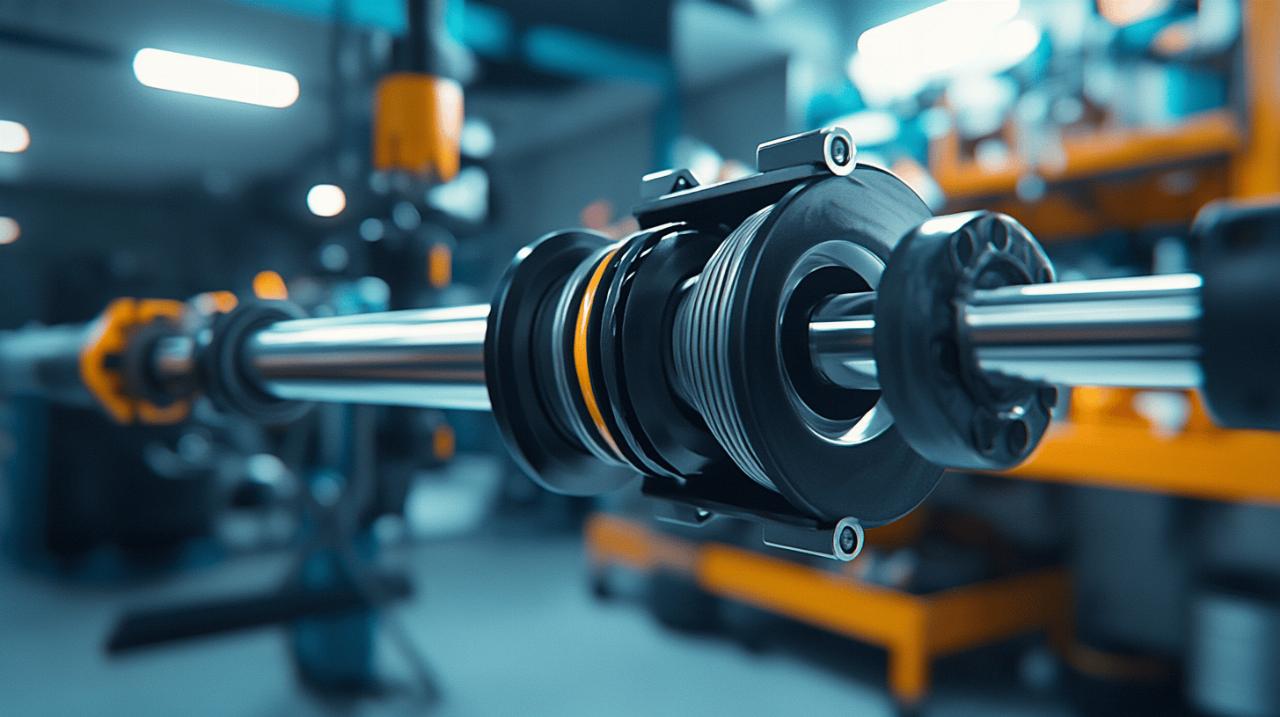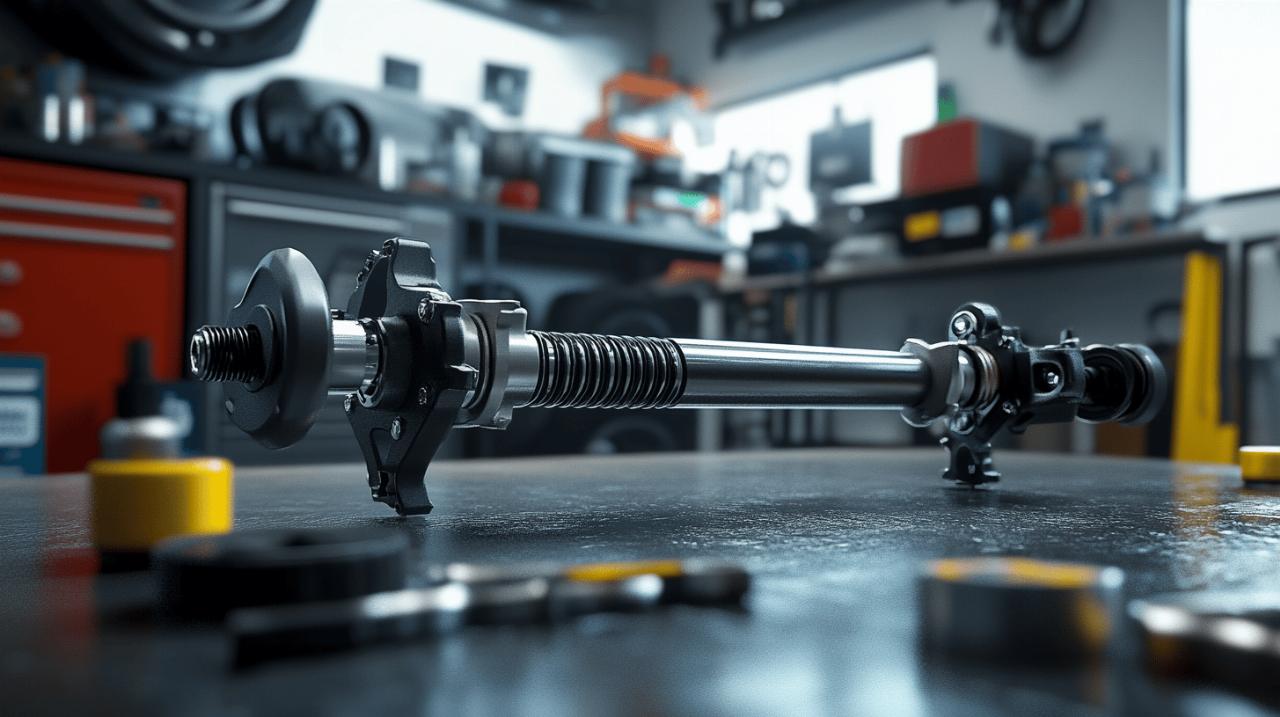When it comes to improving your vehicle’s handling and stability, few components are as critical yet overlooked as stabilizer bar links. Whether you’re a weekend warrior or daily commuter, selecting the right stabilizer bar links can dramatically transform your driving experience. This comprehensive guide will walk you through everything you need to know about choosing these essential suspension components for maximum performance and longevity.
Understanding the Role of Stabilizer Bar Links
The Function and Importance in Vehicle Suspension Systems
Stabilizer bar links, also known as sway bar links, play a crucial role in your vehicle’s suspension system. They connect the sway bar to the suspension components, effectively working to reduce body roll when cornering. When you take a turn, the outer side of your vehicle naturally wants to dip down due to centrifugal force. The stabilizer bar system counters this by transferring load between the left and right wheels, keeping your vehicle more level during turns. Many automotive enthusiasts seeking detailed information about these components often visit resources like https://www.motorpublish.it/‘>https://www.motorpublish.it/ where comprehensive comparisons of stabilizer bar links have been featured in recent months.
Signs of failing stabilizer bar links
Recognizing when your stabilizer bar links are failing is essential for maintaining optimal vehicle performance. Common warning signs include poor handling with unusually loose steering, distinctive noises such as grinding, knocking, or clunking when driving over bumps, and increased body roll during cornering. While stabilizer bar links typically last between 80,000 and 240,000 kilometres, their lifespan varies depending on driving conditions and component quality. Though it’s technically possible to drive with a broken link at speeds under 50 km/h, doing so significantly compromises handling and puts additional strain on other suspension components.
Material considerations for stabilizer bar links
Steel vs reinforced polymer options
The material composition of your stabilizer bar links significantly impacts their performance and durability. Traditional bolt-type links found in older, more budget-friendly vehicles are typically constructed from steel, offering decent durability at a lower cost. Higher-end options often incorporate reinforced polymers, which provide an excellent strength-to-weight ratio while also offering some vibration dampening properties. Premium manufacturers like Metrix Premium Chassis Parts have developed specialized materials for their GDX (Gold Drive Experience) stabilizer bar links, which come with lifetime warranties, indicating their confidence in material durability.
Corrosion resistance and longevity factors
Corrosion resistance is particularly important for components exposed to road salt, moisture, and debris. Quality stabilizer bar links feature protective coatings or corrosion-resistant materials that extend their service life. While budget options priced around £10 each might seem appealing initially, they often lack these protective features and require more frequent replacement. Premium options ranging from £40 to £100 each typically incorporate superior corrosion protection, specialized coatings, and higher-grade materials that withstand harsh environmental conditions, ultimately proving more economical over the vehicle’s lifetime.
Ensuring vehicle compatibility
Identifying the Correct Specifications for Your Vehicle
Vehicle compatibility is paramount when selecting stabilizer bar links. Each vehicle has specific requirements based on its suspension design, weight distribution, and handling characteristics. For instance, trending parts include specific applications like Ford F-150 Control Arms, Chevrolet Stabilizer Bar Links, and Honda CR-V Tie Rod Ends, highlighting the importance of vehicle-specific components. When searching for compatible parts, you must consider not just the make and model, but also the production year, as specifications can change between model generations, sometimes even between different production runs of the same model year.
Oem vs aftermarket compatibility issues
Original Equipment Manufacturer (OEM) parts are designed to match the exact specifications of your vehicle, ensuring perfect compatibility. However, quality aftermarket options from reputable brands like Mevotech, Moog, and Delphi often offer improved designs and materials while maintaining proper fitment. When considering aftermarket parts, verify that they meet or exceed OEM specifications. Some aftermarket manufacturers even produce specialized kits designed for specific vehicle applications, such as the Metrix Premium Chassis Parts Front End Suspension Kits compatible with specific Honda Pilot (2009-2015), Toyota Sienna (2011-2020), and Honda Odyssey (2011-2017) models.
Adjustability features and benefits
How adjustable links improve handling and performance
Adjustable stabilizer bar links provide a significant advantage for performance-oriented drivers and those with modified vehicles. These components allow fine-tuning of the suspension geometry, enabling drivers to adjust the preload on the sway bar system. This adjustability translates to more precise control over body roll characteristics, potentially improving cornering stability and overall handling dynamics. For vehicles with modified ride heights or aftermarket suspension systems, adjustable links become almost essential, as they allow for correction of geometry changes resulting from these modifications.
When to Choose Fixed vs Adjustable Links
While adjustable links offer clear benefits for enthusiasts, they aren’t necessarily the best choice for every driver. Standard fixed-length links are typically more cost-effective and entirely suitable for most daily driving applications. They also eliminate the possibility of adjustments coming loose over time, which can occur with adjustable variants. Consider your driving habits carefully when making this decision. If you primarily use your vehicle for commuting on paved roads, fixed links from a quality manufacturer will likely serve you well. However, if you participate in motorsport events, frequent challenging driving conditions, or have modified your vehicle’s suspension, the additional investment in adjustable links will pay dividends in performance customization.
Design elements that impact performance
Ball joint quality and movement reduction
The design and quality of ball joints in stabilizer bar links significantly impact overall performance. Ball joint style links, commonly found in performance vehicles, sports cars, and luxury models, offer superior articulation and reduced friction compared to bolt-type designs. Quality ball joints should exhibit minimal play while still allowing smooth movement throughout their range of motion. Higher-end designs incorporate features like self-lubricating materials, dust boots to prevent contamination, and precision manufacturing tolerances that minimize unwanted movement, resulting in more responsive handling and reduced noise.
Bushing Types and Their Effect on Ride Quality
Bushings play a critical role in determining both handling characteristics and ride comfort. Rubber bushings, common in many standard vehicles, provide excellent vibration dampening and a comfortable ride, though they allow more body roll during cornering. Polyurethane bushings offer a firmer ride with reduced body roll, making them popular among performance enthusiasts willing to sacrifice some comfort for improved handling. Metal bushings, while extremely durable, can transmit more road noise and vibration into the cabin and are generally reserved for dedicated performance applications. Your choice should align with your priorities regarding comfort versus handling precision.
Researching manufacturers and product reliability
Top brands known for quality stabilizer components
Several manufacturers have established reputations for producing reliable stabilizer bar links. Mevotech and Moog are widely recognized for their quality aftermarket suspension components, offering extensive coverage across vehicle makes and models. Metrix Premium Chassis Parts has gained recognition for their long-lasting suspension products, particularly their GDX stabilizer bar links backed by lifetime warranties. Delphi, with its heritage as an OEM supplier, brings manufacturing expertise to the aftermarket. When evaluating brands, consider their engineering approach, material quality, and warranty offerings as indicators of their confidence in product durability.
Interpreting user reviews and ratings
User reviews provide valuable real-world insights into product performance and longevity. When researching stabilizer bar links, look for consistent feedback patterns rather than isolated experiences. Pay particular attention to reviews from owners of vehicles similar to yours and those who share your driving habits. Professional reviews from automotive publications and websites like Motorpublish offer more technical evaluations and comparisons between different options. Their January 2025 stabilizer bar links comparison provides relevant insights for current shoppers. Balance professional assessments with user experiences to form a comprehensive understanding of product reliability.
Matching links to your driving requirements
Selecting Links for Daily Commuting vs Performance Driving
Your typical driving style should heavily influence your choice of stabilizer bar links. For daily commuting on mostly smooth roads, prioritize components that offer a good balance of comfort and durability, with moderate performance characteristics. Hybrid-style links with quality rubber or soft polyurethane bushings often provide this balance nicely. For performance-oriented driving, including spirited backroad excursions or track days, ball joint style links with firmer bushings will deliver the precise handling feedback and reduced body roll that enhance the driving experience in these scenarios.
Considerations for Off-Road and Rough Terrain Use
Off-road and rough terrain driving presents unique challenges for suspension components. Vehicles regularly traversing unpaved roads, trails, or challenging terrain benefit from extended stabilizer bar links designed specifically for lifted suspensions. These specialized links accommodate the increased suspension travel needed for off-road capability. Additionally, greasable designs allow for regular maintenance to flush out contaminants and extend component life in dusty or muddy conditions. For these applications, durability should take precedence over minor performance advantages, with emphasis on components that can withstand repeated impacts and extreme articulation.
Installation practicalities
Tools and Skills Required for DIY Installation
For mechanically inclined vehicle owners, installing stabilizer bar links can be a manageable DIY project. The process typically requires basic hand tools including socket sets, wrenches, and possibly a ball joint separator tool. More challenging installations might necessitate a torque wrench to ensure proper tightening specifications are met. The complexity varies by vehicle model, with some requiring additional steps like temporarily lowering subframes or removing other components for access. Before attempting installation yourself, research vehicle-specific procedures and ensure you have adequate workspace, tools, and safety equipment including jack stands and wheel chocks.
Professional installation benefits and costs
Professional installation offers several advantages, particularly for those lacking specialized tools or experience. Skilled technicians can identify additional suspension issues that might affect performance, ensure proper torque specifications, and often complete the job more efficiently. Professional installation typically costs between £50-£150 depending on your location and vehicle type, in addition to the parts themselves. This investment often includes alignment checking after installation, which is crucial for ensuring optimal handling and tire wear. For complex suspension systems or when replacing multiple components simultaneously, professional installation provides peace of mind that the work is done correctly.

